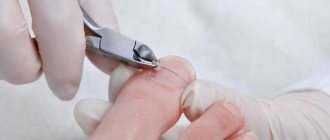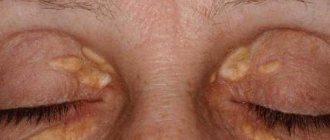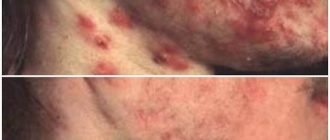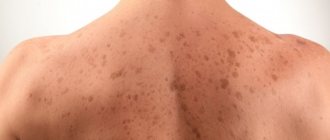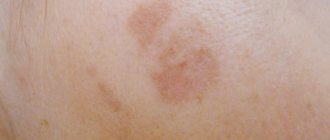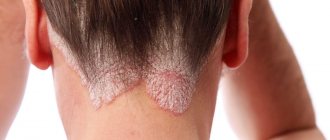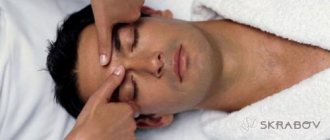Table of contents
- Etiology and pathogenesis
- Clinical manifestations
- Principles of treatment
Gynecomastia in men is a benign enlargement of the male breast (usually bilateral, but sometimes unilateral) resulting from proliferation of the glandular component of breast tissue. Gynecomastia should be distinguished from pseudogynecomastia ( lipomastia ), which is characterized by fat deposition without proliferation of the glandular component.
In our company you can purchase the following equipment for the treatment of gynecomastia in men:
- VASER (Solta Medical)
According to data on requests for medical help, gynecomastia in men most often occurs for the following reasons:
- Medicines - 10–25%
- Persistent pubertal gynecomastia - 25%
- Idiopathic gynecomastia (no reason) - 25%
- Cirrhosis or chronic digestive disorders - 8%
- Primary hypogonadism - 8%
- Testicular tumors - 3%
- Secondary hypogonadism - 2%
- Hyperthyroidism - 1.5%
- Chronic renal failure - 1%
Differential diagnosis
Differential (distinctive) diagnosis of lipomastia is most often carried out:
- with significant enlargement of the mammary gland - with gynecomastia;
- with local manifestations of pathology - with diseases of an oncological nature.
In the latter case, these may be tumors:
- benign - lipoma (from adipose tissue), fibroma (from connective tissue), angioma (from the wall of blood vessels) and so on;
- malignant - liposarcoma, fibrosarcoma and others.
Etiology and pathogenesis
The normal ratio of androgen (testosterone) to estrogen production is 100:1, and their concentration in the bloodstream is 300:1. Gynecomastia occurs as a result of a change in this balance in favor of estrogens . Another cause of the disease is an increase in the sensitivity of the glandular tissue of the breast to the normal level of estrogen circulating in the blood.
Estrogens cause hyperplasia of the ductal epithelium, their elongation and branching, proliferation of periductal fibroblasts and increased vascularization. The histological picture of the male breast as a whole becomes similar to the female mammary gland ( Fig. 1 ).
Estrogen production in men occurs primarily through the conversion of androgens (testosterone and androstenedione) to estradiol and estrone by the enzyme aromatase , primarily in muscle, skin, and fat tissue. The testes produce 6–10 mg estradiol and 2.5 mg estrone per day. An increase in estrogen production and/or tissue sensitivity to it can occur in one of two locations:
- In the testes - associated with tumors or ectopic production of human chorionic gonadotropin (hCG). The latter option occurs with extragonadal gonocytomas, as well as with metastases of lung, kidney and gastrointestinal cancer.
- In the periphery - associated with increased aromatase activity in chronic liver diseases, digestive disorders, hyperthyroidism, adrenal tumors or familial gynecomastia.
Physiological gynecomastia is observed in newborns, adolescents and the elderly. This condition usually does not require treatment (except in cases of excessive breast hypertrophy). For example, pubertal gynecomastia ( Fig. 2 ) in 90% of patients goes away on its own within a period of several weeks to three years.
Pathological gynecomastia is caused by an increase in the production of estrogens and/or an increase in the sensitivity of tissues to them, as well as a decrease in the production of androgens and/or a decrease in the sensitivity of tissues to them. In addition, gynecomastia can be idiopathic , that is, for no apparent reason. This diagnosis is made after a complete examination of the patient, when the provoking factor cannot be identified.
Causes of pathological gynecomastia:
- Testicular injury - the damaged organ produces androgens worse.
- Viral orchitis - an inflammatory process in the testicle reduces the production of androgens.
- Congenital anorchia - the absence of testicles introduces an imbalance in the antrogen-estrogens ligament.
- Malignancies that increase serum human chorionic gonadotropin (hCG) levels.
- Pituitary tumors or abnormalities leading to hyper- or hyposecretion of luteinizing hormone.
- Hyperthyroidism - gynecomastia is caused by increased aromatase activity and increased levels of sex hormone binding globulin (SHBG).
- Chronic digestive disorders - cause a decrease in the level of gonadotropin and testosterone compared to estrogen. Moreover, after normalization of nutrition, the patient’s condition may worsen due to an accelerated increase in the production of estradiol compared to testosterone.
- Klinefelter syndrome is a hereditary disease characterized by the presence of small, dense testicles and gynecomastia in men.
- Kallmann syndrome is a combination of hypogonadism with olfactory disorders and insufficient secretion of gonadotropin-releasing hormone (GnRH).
Some drugs can cause gynecomastia in men - antiandrogens (ketoconazole, finasteride, spironolactone), cytostatics (methotrexate), antihypertensive drugs (digoxin, amiodarone), hormonal drugs (phenothiazine derivatives), anti-infectives (isoniazid, metronidazole), drugs (amphetamines, methadone) etc.
Rice. 1. Differences between normal male breast structure ( left ) and gynecomastia ( right ). With gynecomastia, in addition to fat and muscle tissue , hyperplastic glandular tissue ( glandular tissue ) is noticeable (Mayo Foundation)
Rice. 2. Pubertal gynecomastia (www.medscape.com)
Plastic correction of small breasts
The procedure for breast enlargement takes place under general anesthesia and lasts from 30 minutes to 2 hours. The doctor chooses access to the breast based on the individual characteristics of the patient’s body.
There are 3 types of access:
- 1.incision under the breast (submammary). Such an incision, as a rule, has a length of 3.5-5 cm. This is usually enough to place the prosthesis both under the glandular tissue and under the major muscle of the chest. This technique is often used by surgeons because the doctor can see and control the progress of the procedure. The disadvantages of this method include high invasiveness and, as a consequence, a long rehabilitation period. After using this method of surgery, a fairly large scar may remain;
- 1.incision around the nipple-areolar complex (periareolar). After using this method, there are practically no traces of surgical intervention. However, this method is not recommended for women who want to give birth and breastfeed. This is due to the fact that a large amount of damage occurs during the operation. For this reason, women may experience milk stagnation in the future, which can lead to mastitis. In addition, after surgery there is often a loss of sensation in the nipple. This method is not suitable for significantly increasing breast volume;
- 1.incision in the axillary area (axillary). The scar after this operation is practically invisible. Also, the advantages of the operation include the ability of the doctor to control the entire process, thereby avoiding damage to blood vessels and lymph nodes. This possibility exists thanks to an endoscope. This operation is not performed if the patient wants to get a breast size larger than 4. This method requires the experience and professionalism of the surgeon.
Breast augmentation in 2 stages is performed if the patient does not have the required amount of tissue to install a prosthesis of the required size. For 1.5 months, the woman wears expanders that stretch the skin. After this, the breasts are enlarged using one of the three methods above.
The placement of the implant is also chosen by the doctor. It depends on the initial condition of the breast. During the operation, the surgeon can place the prosthesis under the glandular tissue, under the large pectoral muscle, or a combination.
Clinical manifestations
Generally speaking, gynecomastia in men is manifested by enlarged breasts. In this case, one should distinguish between true gynecomastia and pseudogynecomastia.
Pseudogynecomastia occurs in overweight men. In this case, fat deposits are found only in the subareolar area (around the nipple), on both sides. Over time, such breasts do not change shape or size, unless there is a significant increase in aromatase activity in the adipose tissue - then true gynecomastia can occur.
Differential diagnosis of these conditions is carried out as follows. The patient is placed on his back with his hands behind his head. Then the doctor places the thumb and index finger on the outside of the nipple opposite each other, as if he wants to pinch it. Next, he begins to slowly bring his fingers together—to “pinch.” With true gynecomastia, a glandular mobile mass characteristic of the female breast will be felt in the area of the areola. With pseudogynecomastia, the moving mass is not felt.
If you suspect gynecomastia in a man, you should evaluate his appearance (eunuch-like habitus), examine the testicles (reduction in size, pronounced asymmetry, etc.), and look for signs of chronic diseases of the liver, thyroid gland or kidneys.
Features of the postoperative period
Rehabilitation after breast augmentation usually does not last long, the pain is not very pronounced and can be easily relieved with painkillers. The woman must stay in the clinic for 2-3 days after the procedure. In some cases, your doctor may prescribe antibiotics. The stitches are removed within 7-10 days.
For the first month and a half after the procedure, the patient should use compression garments and avoid performing heavy physical work. At first after surgery it will be difficult to raise your arms. Therefore, it is desirable that household activities during which such movements need to be made be performed by members of the household.
In addition, after surgery it is recommended to abstain from sexual intercourse. This is due to the fact that during arousal, blood circulation in the chest increases, which can cause bruises.
The results achieved during mammoplasty last a lifetime—there is no need to replace prostheses. The only condition for maintaining the initial result is maintaining a stable weight: during weight gain, the skin is stretched, which can lead to sagging of the breasts and implants (if they are located under the mammary gland). If the prosthesis is located under the pectoral muscle, then changes in body weight will not affect the appearance of the breast.
Video - Gynecomastia in men
VASER
Plastic surgeons about the VASER technique and training course
Body contouring and surgical treatment of cellulite using VASER-associated liposuction.
VASER
Master class by Alfredo Hoyos Total Definer at the Osnova clinic
On April 26-29, 2020, a master class by Alfredo Hoyos was held on body contouring and lipotransfer in one operation.
Z Wave | ZLipo Med
Combination of Z Lipo and Z wave devices (Zimmer)
The RUWT procedure, carried out immediately after the end of the cryolipolysis procedure, increases the effectiveness of the latter by 2 times.
All Videos
Prevention
The most effective measures to prevent the development of lipomastia are those that prevent the development of general obesity. This:
- rational nutrition - limiting the intake of fatty foods and sweets, eating enough vegetables and fruits, limiting intake, and even better, completely abstaining from alcoholic beverages;
- regular physical activity;
- prevention of diseases that can contribute to obesity, and if they occur, timely treatment.
Forecast
The prognosis for lipomastia is generally favorable. With proper treatment, excess fat deposits disappear without a trace. If excess fat has been removed surgically, then with continued exposure to provoking factors, relapses of the pathology are possible.
Kovtonyuk Oksana Vladimirovna, medical observer, surgeon, consultant doctor
9, total, today
( 46 votes, average: 4.59 out of 5)
Physiotherapy for prostatitis: effectiveness and application features
Congestive (stagnant) prostatitis: causes, symptoms, treatment and consequences

